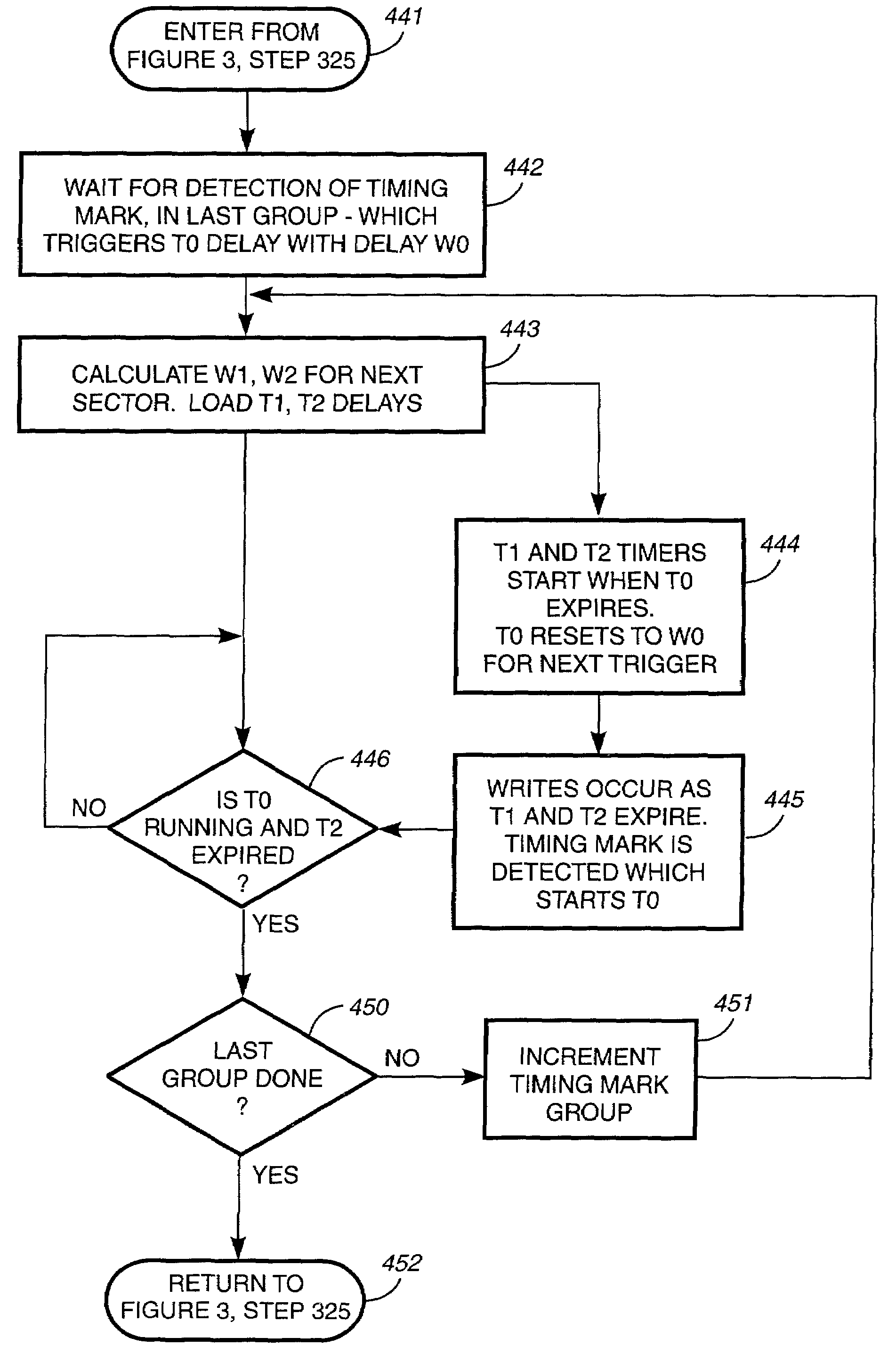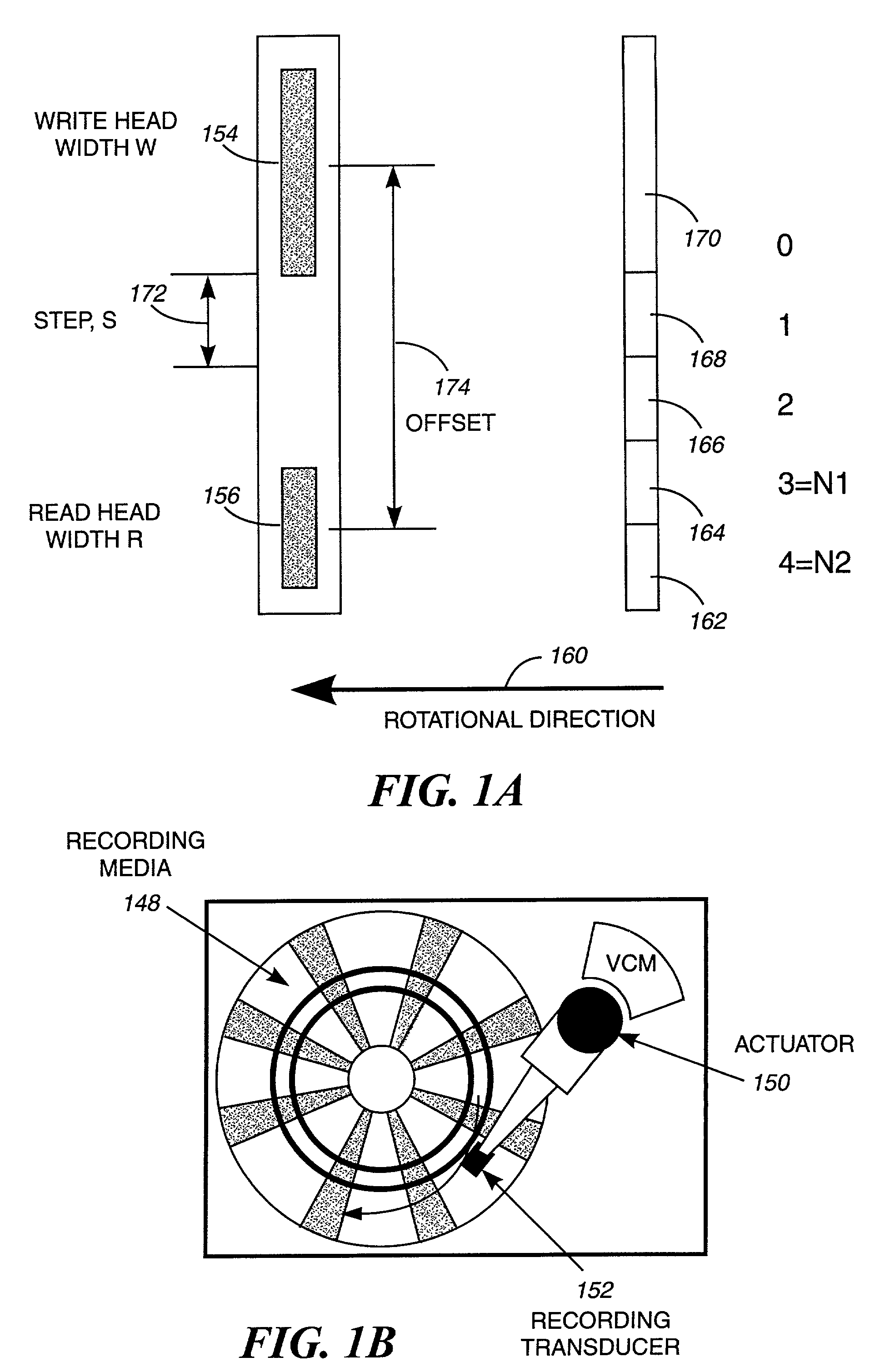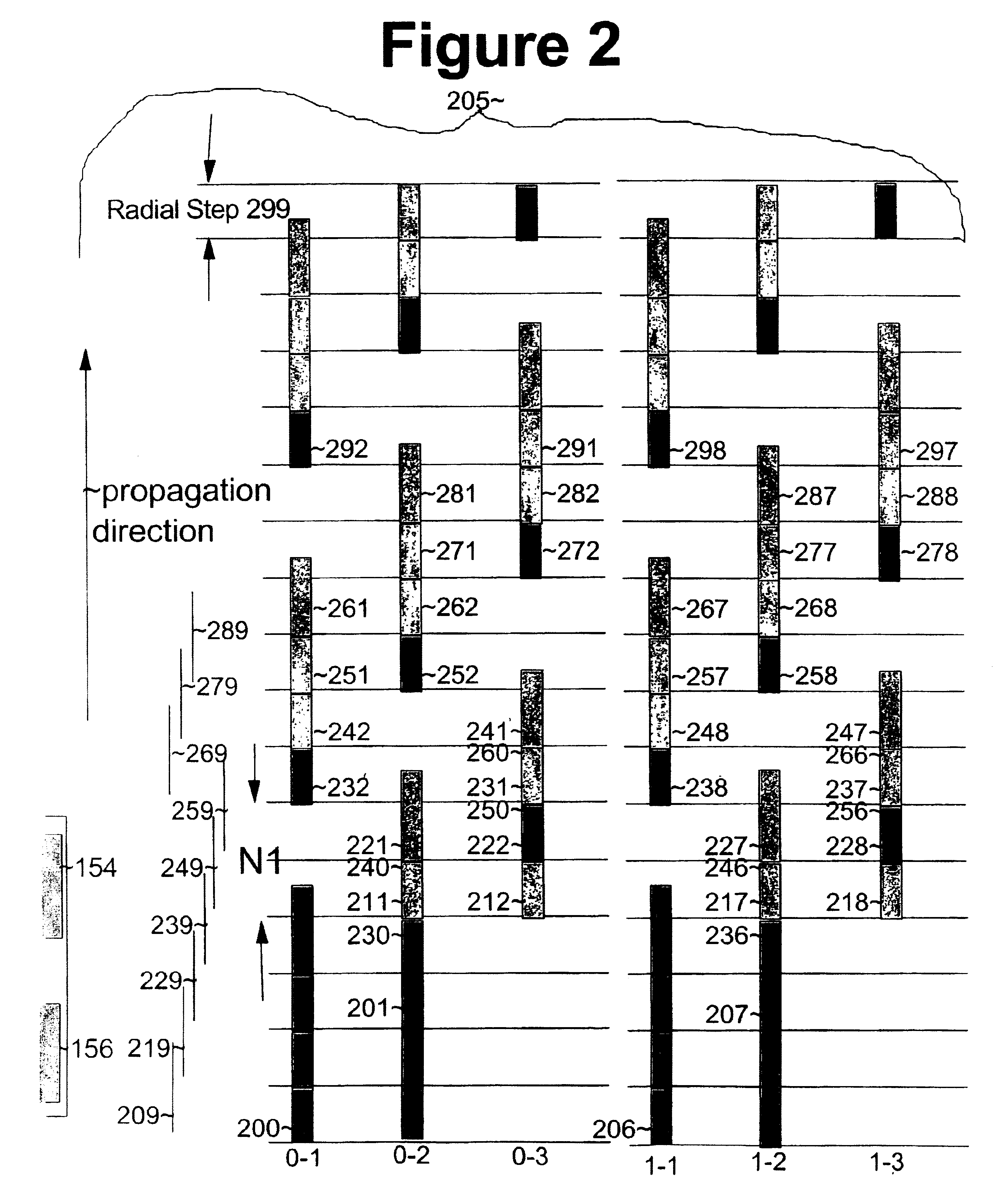Self-servo-writing multi-slot timing pattern
a timing pattern and self-servo-writing technology, applied in the direction of digital recording, maintaining head carrier alignment, instruments, etc., can solve the problems of reducing the amplitude of the signal, increasing the difficulty of such servo-writers in invading the internal environment of the hda for servo, and insufficient traditional servo-writing methods, so as to improve the overall precision of timing propagation, improve the accuracy of timing mark placement, and improve the effect of self-
- Summary
- Abstract
- Description
- Claims
- Application Information
AI Technical Summary
Benefits of technology
Problems solved by technology
Method used
Image
Examples
first embodiment
[0087]The '740 application teaches two embodiments with different delays for writing . The first embodiment is equivalent to the embodiment of the current invention called WWR. In this embodiment, the delay for writing is either the estimated or measured interval between the timing mark from which a delay is measured and the timing mark at the circumferential position to be written, plus the systematic and random error corrections:
delay=interval+systematic+random_error.
second embodiment
[0088]The second embodiment is equivalent to the embodiment of the current invention called DWWR. In this embodiment, the delay for writing is the sum of systematic and random error corrections:
delay=systematic+random_error.
[0089]The '740 application then teaches how to calculate delays for writing from (estimated) intervals. We will use the variable D to represent the sum of the systematic plus random_error terms as defined in the '740 application We will use the variable A to represent any corrections to the interval for variations in the rotation speed, following the methods of prior art. Finally we will describe how to use those delays in the WWR and DWWR embodiments for writing for the case of timing mark groups.
[0090]Calculations of Delays for Writing (WWR Embodiment)
[0091]FIG. 5 is a table of formulae for the write timing slots, read timing slots following incrementing, and write delays for different read slot cases, in one embodiment of the present invention. FIG. 5 summariz...
PUM
| Property | Measurement | Unit |
|---|---|---|
| radius | aaaaa | aaaaa |
| of time | aaaaa | aaaaa |
| width | aaaaa | aaaaa |
Abstract
Description
Claims
Application Information
 Login to View More
Login to View More - R&D
- Intellectual Property
- Life Sciences
- Materials
- Tech Scout
- Unparalleled Data Quality
- Higher Quality Content
- 60% Fewer Hallucinations
Browse by: Latest US Patents, China's latest patents, Technical Efficacy Thesaurus, Application Domain, Technology Topic, Popular Technical Reports.
© 2025 PatSnap. All rights reserved.Legal|Privacy policy|Modern Slavery Act Transparency Statement|Sitemap|About US| Contact US: help@patsnap.com



